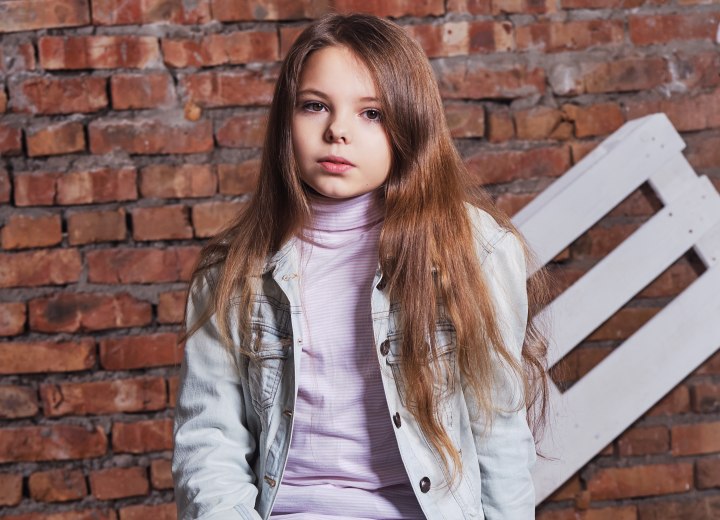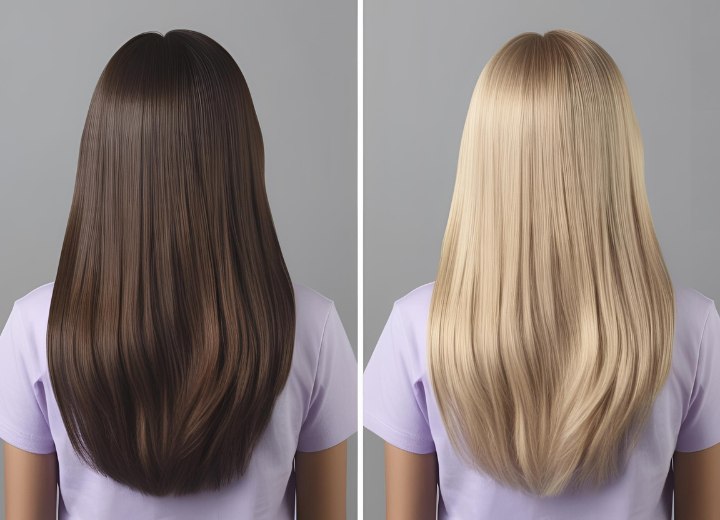Restoring Blonde Hair After Dark Coloring

We're hoping to find a solution that doesn't involve waiting months for it to grow out, as we've seen people transition from dark to light colors relatively quickly. She's applied color approximately five times in total, which I realize complicates things.
When we consulted a professional salon, they advised that restoring her natural blonde would require a full year of treatments. This timeline seems excessive to us, especially since the dark color doesn't harmonize with her skin tone. Are there more efficient alternatives that won't compromise her hair health? Is there a way to accelerate the process while keeping her hair in good condition?
Lightening hair involves the opposite chemical process. Products used for lightening work by breaking down and dispersing these deposited color molecules from within the hair shaft. The greater the desired lightening effect, the more intensive this dispersal process must be. This is particularly true when attempting to return to something as light as platinum blonde from a dark brown base.
The chemical processes required for significant lightening inevitably stress the hair structure. The cuticle (outer protective layer) becomes compromised during these treatments, which can lead to porosity issues, breakage, and that straw-like texture often associated with over-processed hair. This explains why professional stylists typically recommend a gradual approach when making dramatic color transitions, especially for young people whose hair is still developing its mature characteristics.
While some consumers report success using commercial color removers like Colorfix and similar products, these results often come with significant caveats. These products claim to gently remove permanent color, but the reality is usually quite different from the marketing promises.
For a child as young as 11, whose hair is typically finer and more vulnerable than adult hair, these aggressive chemical treatments pose even greater risks. Hair that's been damaged by excessive chemical processing can take years to fully recover, and in some cases, cutting off the damaged portions becomes the only viable solution.

• A series of gentle, partial lightening treatments spaced several weeks apart.
• Deep conditioning treatments between lightening sessions to maintain hair integrity.
• Gradually transitioning through intermediate shades (perhaps caramel or light brown) rather than attempting an immediate platinum blonde result.
• Specialized toning products to counteract brassiness during the transition
While you could potentially find a salon willing to attempt a single-session transformation back to platinum blonde, I strongly advise against this approach, especially for a child. The risk of significant hair damage, breakage, or even chemical burns to the scalp is substantial with aggressive lightening techniques.
A compassionate middle-ground approach might be consulting with several reputable salons that specialize in color correction to see if there's a responsible plan that could achieve results in perhaps 4-6 months rather than a full year. The patience required now will ultimately result in healthier hair and a more natural-looking final result that she'll appreciate in the long run.
©Hairfinder.com
See also:
Is it ok to dye a child's hair?
Where does the color go when you bleach dark hair?